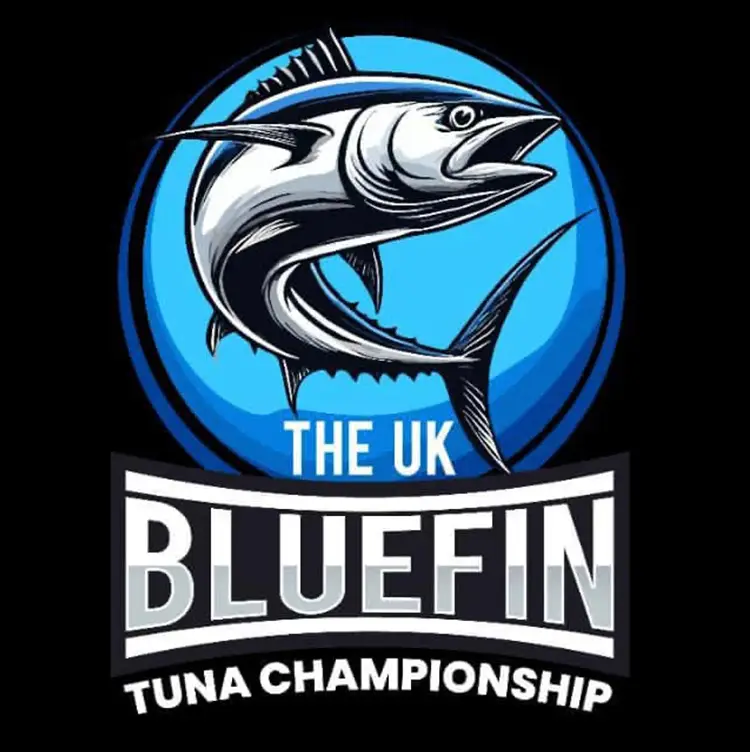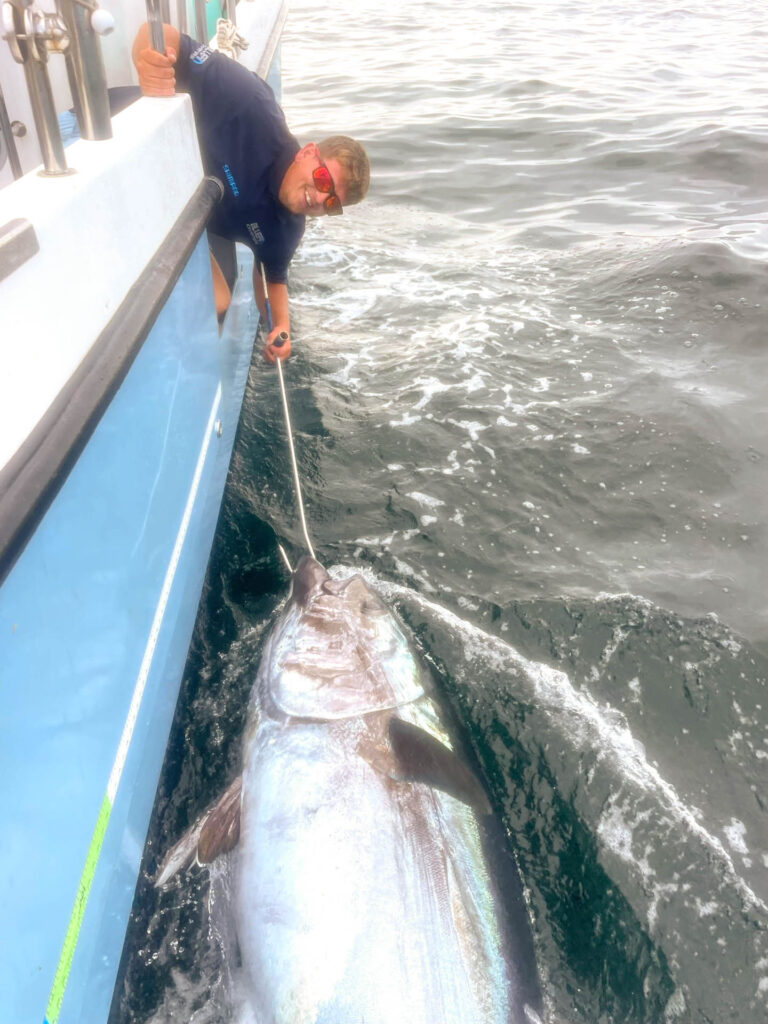
Welcome to the UK home of big game fishing

UK TUNA CHAMPIONSHIP
Winners 2024
BLUEFIN TUNA FISHING
If you have got this far it sounds like you have done your homework already.
We are fully licensed by the UK government to catch and release Bluefin Tuna.
Our Bluefin Tuna fishery here in Cornwall is by far the best in UK and definitely the right location for your best chance of catching that special fish of a lifetime.
Currently, to date, we have landed well over 250 giant Bluefin Tuna with almost all of them being tagged and released for scientific research.
So what’s our biggest and best catch.
In 2021 our biggest was 113 inches calculations put it at around 900-1000lb that was the largest Bluefin Tuna caught for science that year and I believe the record still stands.
This year also seen us break another UK record of catching and tagging 13 Bluefin Tuna in one day something that was never thought possible and all witnessed by an onboard CEFAS observer which was a requirement of our license at the time.



BLUEFIN TUNA FISHING CHARTERS AVAILABLE
8 hour £1,200
10 hour £1,350
12 hour £1,500
Please note on booking which duration you would like.
Spreader bars, live baiting, popping, jigging all available on request.
July 18th – September 1st – Newlyn Harbour Penzance.
September 2nd – November 30th – Port Pendennis Falmouth
Online booking available £200 deposit.




2022 seen us catch another Giant Bluefin Tuna of 112 inches which again was the biggest fish caught for science that year.
This year was also the most we caught in one season which totalled 174 fish which made our catch stats 2.7 fish per day so pretty impressive stuff.
Our catch records show you have definitely come to the right place to book a charter trip.
So for some booking information.
Firstly all bookings are done via phone text or email to me the skipper and owner direct.
Our trip durations are standard 8 hours to 10 and 12 hour.
Locations St Ives, Newlyn or Port Pendennis marina Falmouth.
Please check location on booking as we move locations as the season progresses.
All top of the range rod and reels provided along with all lures and terminal tackle.
Hope I can help and tight lines.
TRIP SUMMARY
- Type of Fishing - Bluefin Tuna
- Trip Duration: 8, 10 & 12 hours private charters
- Cost Starting From: £1200
- Max of 6 anglers per trip
- Code of Practice: 20 miles
- Strictly catch, tag & release
- rods, reels & tackle included in cost
PICK UP LOCATION
Please check the location of your trip.
ENQUIRIES
Get in touch with Sam the skipper for more information on Bluefin Tuna Fishing and how to book.
Our Bluefin Tuna Fishing trips are strictly tag and release.
BOOK A TRIP
Shark Fishing and Bluefin Tuna Fishing is available by request to
samnarbett@icloud.com or mob 07747493101
Get in touch with Sam the skipper for more information on Bluefin Tuna Fishing and how to book.






Bluefin Charters fishing & Jaws Adventure RIB
12 years ago today is when we first ventured into the charter boat industry by purchasing or first vessel a offshore 32 previously
known as Bite Adventures.
Since then we haven’t looked back and was one of the best decisions we as a family have ever made.
Downed the building tools and went fishing.
Sometimes the toughest decisions are the best decisions 🙏
Here’s to many many more years of fishing and creating fishing memories ❤️ ... See MoreSee Less
It’s a very sad day today as i have finally decided these glove have had enough 🥲
They have landed well over 600 tuna in the last couple of seasons and credit to Aftco for making such a tough pair of gloves.💪 ... See MoreSee Less
The Welsh 🏴 lads from Barry put in a shift today with all the guys getting their first Bluefins with big man going back to back to get in on the photos.
Fantastic days fishing and great to have some lovely weather again 😁 ... See MoreSee Less
What a fantastic few days we have had with Chris, 2 Barry’s and lucky Tim Which we found out why he’s called lucky Tim.
The Guys hit the Tuna hard over the few days and in some poor sea conditions which made life a little uncomfortable at times but i think it’s fair to say we gave there usual spot the florida keys a good run for its money.👌
The Tuna fishing was on fire with their first of the trip on the hook within minutes of the lines being in the water and that continued through there first day at set the tone for the trip.
Congratulations guys on your catches and thank you for being great company over the days.
Lucky Tim got the biggest catch as of course he’s lucky. ... See MoreSee Less
We have only gone and got another thresher.
Minds blown and will do full report soon.
Lightning really does strike twice and yes it was on a lure again🥵 ... See MoreSee Less
Well the weather finally beats us and stops us for tomorrow but we will be keen to get straight back out as the fish are in crazy numbers at the moment and it was another great couple of days with lads from Bournemouth.
Unfortunately one of the lads fell poorly for his long awaited trip and missed out on his second day 🤧
Congratulations guys on a great couple of days👌😎 ... See MoreSee Less